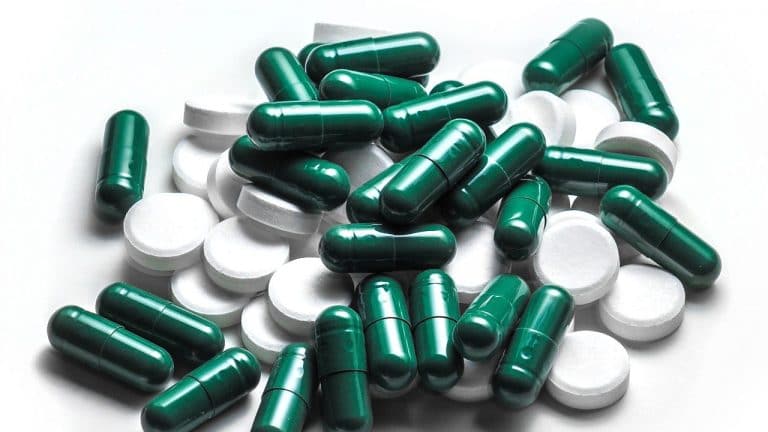33 Addiction Statistics You Didn’t Expect to Be True

Who would’ve thought we are such a dependent society? Unfortunately, addiction statistics are harsh and undeniable.
Even though it’s the 21st century, even though we have all the information possible on the detrimental effects, Americans still fail to resist the (sometimes deadly) temptations. Why is it so? There are lots of (personal) reasons, but as you shall see later, a certain gender discrepancy is present.
Our attention is dedicated primarily to opioids and the consequences, along with alcohol addiction. Marijuana is present in the stats, too, but probably not in the way you anticipated.
Before we begin, here’s a brief preview of what you may expect:
10 Addiction Facts & Stats You Should Know About
- The latest stats confirm that 19,416 people in the US died of a drug overdose in 2020.
- COVID-19 is responsible for an increase of substance use up to 13%.
- Over 500,000 people worldwide die from drug abuse.
- In 2020, 2.1 million Americans abused opioids.
- COVID-19 increased binge drinking up to 32%.
- Switzerland reduced its heroin death rate by 64% by legalizing it.
- The global opioids market will grow in 2023 to $29.5 billion.
- Marijuana sales in some states went up to 20% during the coronavirus pandemic.
- Men are more likely to become addicted than women.
- Almost 70% of adult smokers want to end their nicotine addiction.
Now, take a look at the not-so-pretty picture of today’s society.
Major Addiction Statistics for 2022
What do the numbers tell us? How many Americans die from drug abuse? Is there such a thing as marijuana addiction? How did the global pandemic affect people regarding substance abuse? Let’s find out!
1. Over 20 million Americans are dealing with at least one addiction.
(AddictionCenter)
Sadly, the percentage of Americans receiving the right treatment is only 10%. Drug addiction rates also show us that in the last 30 years the number of deaths due to drug overdose have tripled.
2. The latest stats confirm that 19,416 people in the US died of a drug overdose in 2020.
(CDC)
When compared to drug overdose deaths in 2019, the numbers show us that in 2020 the number of deaths increased by10%.
3. Official drug abuse facts: there is no such thing as marijuana addiction.
(NIH)
Marijuana is not addictive per se. What it may cause is the so-called marijuana use disorder, which refers to feeling negative marijuana withdrawal symptoms in cases when the brain was used to large amounts of marijuana.
4. COVID-19 is responsible for an increase in substance use up to 13%.
(CDC)
In line with the recent opioid abuse statistics, a survey was taken in the middle of the pandemic. 24.7% of people that use substances to deal with stress related to the global pandemic are aged between 18-24. 17.9% of them are employed, and 24.7% of them are essential workers.
5. Industries with the highest alcohol and drug use rates are hospitality, recreation, mining, and construction.
(DrugRehab)
These concern drug and alcohol abuse. The first two are more prone to develop an addiction to drugs, while the latter have alcohol issues.
6. Addiction can be developed after just one use of the substance, substance abuse facts show.
(Foundations Recovery Network)
This might come as a surprise, but keep in mind that cocaine, heroin, methamphetamine, and similar illegal substances are able to induce addiction after a single initial use. Alcohol and cigarettes can cause addiction after a few uses.
7. Substance abuse statistics illustrate that 30% of Americans with some form of mental illness are more submissive to drugs.
(Rehab Spot)
In other words, people who suffer from depression or anxiety are at higher risk to develop some form of addiction. This risk is even higher with bipolar disorders.
8. Men are more likely to become addicted than women.
(Psychiatric Times)
Generally, men have higher chances of becoming addicted to nicotine, alcohol, or illegal drugs. Apparently, socio-cultural patterns are to blame more than biological gender differences.
9. Almost 70% of adult smokers want to end their nicotine addiction.
(Psychology Today)
Addiction statistics show us that 68% of nicotine addicts wish to break their bad habit. Little wonder, if one is aware of the depressing lung cancer statistics.
Vaping statistics report a lot of smokers see vaping or juuling as less addictive, but this is not true if they are still consuming nicotine.
10. Genetics is the strongest biological factor in developing a substance use disorder.
(Psychology Today)
Apart from physiological factors and gender, variations in genes carry the highest risk. A bad set of genes increases the risk of addiction development by about 50%.
Crucial Drug Abuse Statistics and Facts
These facts & stats will tell us more about the drug abuse problem worldwide and in the US.
10. Nearly 10% of the overall health care expenses go to drug prevention and drug treatment.
(World Economic Forum)
One of the most shocking addiction facts comes from knowing how much society is lashing out for healthcare expenses. For example, if we put AIDS and cancer expenses into the bargain, the drug prevention programs will still cost more.
With that in mind, it’s logical to presume that the success rates today are higher than 50 ago. However, that couldn’t be further from the truth.
11. Women are more likely than men to develop an addiction to prescription drugs.
(American Addiction Centers)
The reason may lie in the fact that women will more probably suffer from some kind of chronic pain and get painkillers prescribed. Furthermore, they tend to receive higher doses, which is another significant factor.
12. Drug use statistics indicate that US doctors abuse prescription medicine more than their patients.
(DrugRehab)
Up to 15% of healthcare workers abuse prescription drugs due to the inability to cope with stress at work or deal with pain. According to one study, the riskiest group comprises of emergency room doctors and psychiatrists.
13. The global opioids market will grow in 2023 to $29.5 billion.
(Ensysce)
For comparison’s sake, the market worth in 2017 was “mere” $20 billion.
30% of the world population deals with some kind of chronic pain that needs to be treated with various opioid analgesics, and the US has the biggest opioids market.
14. Opioid addiction statistics tell a macabre tale: more Americans died from overdoses than in car crashes in 2020.
(Car and Driver) (CDC)
The records show us that 16,650 Americans died from car crash injuries in 2020, while in the same year, about 19,000 Americans died of a drug overdose.
15. Switzerland reduced its heroin death rate by 64% by legalizing it.
(HuffPost) (North Carolina Health News)
The addicts are registered in the local hospital and they regularly get their dosage from the physician in charge. The country legalized prescription heroin in 1994 and heroin statistics show Switzerland has had zero cases of legal heroin overdose since then. HIV infections have dropped by 84% as well.
16. Over 500,000 people worldwide die from drug abuse.
(WHO)
Whereas about 70% of deaths are associated with opioids, nearly 30% of deaths are linked to drug overdose. Naloxone, a type of medication, can save a person from death when it is given in time.
17. Based on the cocaine addiction rate, the number of deaths caused by the drug rose by 26.5%.
(US News) (US News)
During the period between 2009-2013, cocaine death rates were consistent. However, in 2018 the numbers became three times higher. Methamphetamine and other psychostimulants were responsible for 34.8% more deaths by overdose.
18. Roughly 3 million Americans are diagnosed with opioid use disorder (OUD).
(NCBI) (Managed Healthcare Executive)
It’s important to point out that OUD is one of the main causes of deaths, particularly in people under 50. The numbers are expected to skyrocket in the future, given that the pandemic disrupted its treatment.
Globally, 16 million people suffer from OUD.
19. Prescription drug abuse stats show us that depressants, opioids, and stimulants are the most abused prescription drugs.
(Midwest Detox Center) (Web MD)
These include the most used prescription drugs like sleep medications, morphine, methadone, amphetamines and methylphenidate.
What’s alarming is that 6% of Americans regularly use prescription drugs, but not for medical reasons. The percentage is incredibly high and is certainly the root of the US prescription drug addiction problem.
20. Heroin addiction rate shows us that prescription drug addicts have 40 times bigger chances of becoming addicted to heroin.
(CNN)
Once a patient becomes addicted to painkillers but they can’t get their prescription anymore, they turn to heroin as a cheaper alternative.
Alcohol Abuse Statistics
Alcoholism belongs to a category of one of the biggest health problems today, with a high mortality rate. How many and how often Americans abuse alcohol?
21. An alcoholic is 10 times more likely to commit suicide.
(Our World in Data)
This makes alcohol addiction the most life-threatening of all addictions. A person addicted to an opioid or a psychostimulant has a 7 or 8 times greater risk, respectively, compared to a non-addict.
22. 5.1% of all diseases in the world are caused by excessive alcohol consumption.
(WHO)
It also accounts for 10% of deaths in people who are between 15 and 19 years old.
23. Alcohol addiction rate reveals that around 10% of alcohol addicts face a withdrawal that can cause death.
(American Addiction Centers)
Acute alcohol withdrawal (AW) can cause serious illness, and even death, in long-term alcohol addicts.
24. Alcohol abuse costs the States $249 billion per year.
(Statista)
The total sum of alcohol-related annual expenses includes crime, lowered productivity at work, and healthcare costs.
25. Alcohol addiction relapse rates range from 40% to 60%, alcohol statistics reveal.
(American Addiction Centers) (Drug Abuse)
Although undesirable, relapse is a common process in recovering from alcohol addiction. Alcoholism is a chronic disease, so it is extremely hard to end it. Approximately 90% of ex alcoholics experience relapse after 4 years of addiction treatment.
26. COVID-19 increased binge drinking up to 32%.
(Science Daily)
During the lockdown binge drinkers were more likely to drink twice as much alcohol, compared to non-binge drinkers. As a matter of fact, each new lockdown week brings an increase in binge drinking, so we’re yet to see how it all ends.
Marijuana Addiction Facts That Speak the Truth
How many people consume marijuana, what is CUD, and many more stats & facts on cannabis.
27. 72% of marijuana users changed their smoking routine due to COVID-19.
(Westword)
22% of people stopped sharing their bongs with other people since the pandemic, and 11% of the surveyed stopped consuming marijuana completely. Naturally, 98% admitted to having altered their social habits.
28. The number of marijuana deaths on an annual basis: 0.
(HuffPost) (Healthline)
The number of people who died from a marijuana overdose is still zero – that has still not happened and is virtually impossible to occur. This statistic also goes in favor of legalizing marijuana and taking it off the list of illegal drugs.
29. 9% of cannabis users can develop CUD (cannabis use disorder).
(American Addiction Centers) (PubMed)
Cannabis belongs to drug addiction statistics due to its classification. The risk percentage is higher (17%) for people that started smoking marijuana in their teens.
On the other hand, despite the increased cannabis use in the recent years, the figures show no increase in chances of developing CUD.
30. CBD can help heroin addicts in their recovery process.
(Forbes)
Recent research has shown that CBD can reduce cravings and anxiety among recovering heroin abusers. A study showed the positive effects remained even after the participants stopped using CBD.
31. Marijuana consumption rate among American college students is the highest it has ever been in the last three decades.
(University of Michigan) (Finances Online)
Addiction statistics are pretty worrying, given that 42.6% of college students use marijuana every year. But maybe even more so when it comes to Adderall overdose and abuse than marijuana. According to one survey, 79% of college students are using Adderall to help them study.
32. Marijuana sales in some states went up to 20% during the coronavirus pandemic.
(Headset) (Politico)
This was especially true for cannabis edibles, flowers, and beverages that were in high demand. The sales for the aforementioned products had a 28% growth in sales.
33. 18- to 29-year-old Americans are the largest group of cannabis smokers.
(Statista)
The older Americans are, the less cannabis they smoke. However, that is not to say they aren’t trying out other cannabis-related products. On the contrary, seniors are very keen on them too.
Conclusion
At the moment, the US is going through its biggest opioid crisis ever. The opioid crisis statistics are very grim, and it’s a vicious circle. People get prescription drugs very easily, only to later become so addicted they turn to cheaper, illegal alternatives such as heroin. Alcohol stats are very grim too.
Marijuana, though, should be excluded from criminal drug use statistics in order to get a clearer picture. Cannabis is not addictive, and even the World Health Organization is recommending its reclassification.
Addiction, perhaps in part caused by alienation, is the plague of the modern era, destroying us from the inside. A serious chronic disorder, though it has not been given enough official recognition as such. These addiction rates and facts should serve as a wake-up call not only for those suffering from substance abuse but decision-makers around the world as well.





